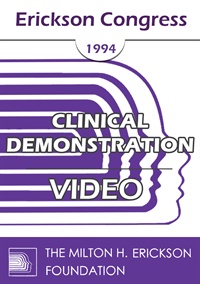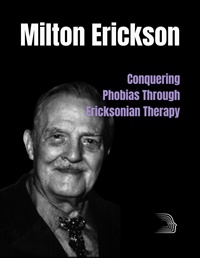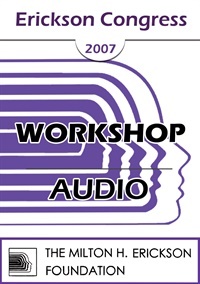
- Average Rating:
- Not yet rated
- Topic Areas:
- Workshops | Addiction | Children and Adolescent Therapy | Depression | Eating Disorders | Ericksonian Hypnosis and Therapy Techniques | Hypnosis | Metaphors | Phobia | Trauma | Trance
- Categories:
- Erickson Congress | Erickson Congress 2007
- Faculty:
- Cheryl Bell-Gadsby, M.A., R.C.C.
- Duration:
- 1:54:20
- Format:
- Audio Only
- Original Program Date:
- Dec 07, 2007
- Short Description:
- This workshop will provide participants with innovative and supportive strength-based interventions to address the unique impact of violence and trauma on adolescent girls. A model for applying Ericksonian hypnosis and metaphor will be presented and practiced. These techniques can be used to facilitate clients in reconnecting to a healthy mind/body state by applying tools for understanding and working with the expressions of trauma such as disordered eating, suicidal ideation, self-harming, addiction, depression, anxiety and phobias in the daily lives and relationships of young women.
- Price:
- $15.00 - Base Price
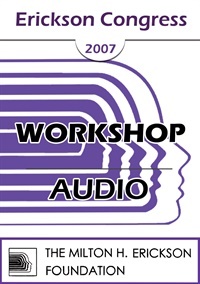
- Average Rating:
- Not yet rated
- Topic Areas:
- Workshops | Self-Hypnosis | Phobia | Anxiety | Hypnosis | Panic
- Categories:
- Erickson Congress | Erickson Congress 2007
- Faculty:
- Bernhard Trenkle, Dipl. Psych
- Duration:
- 1:58:48
- Format:
- Audio Only
- Original Program Date:
- Dec 07, 2007
- Short Description:
- This workshop will focus on the use of hypnosis and self-hypnosis techniques in the treatment of phobias, anxiety and panic disorders. A new approach for self-treatment of anxiety disorders will be addressed. Building hope and diminishing helplessness are essential intervention strategies for achieving psychotherapeutic goals. The presenter will address different ways to achieve these objectives. A specific and very useful self-hypnosis technique will be demonstrated. Homework assignments, pattern disruption techniques and stabilizing the treatment results also will be discussed.
- Price:
- $15.00 - Base Price
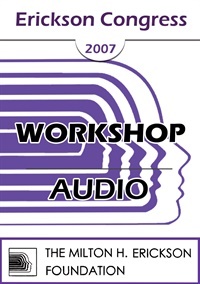
- Average Rating:
- Not yet rated
- Topic Areas:
- Workshops | Hypnotherapy | Phobia | Panic
- Categories:
- Erickson Congress | Erickson Congress 2007
- Faculty:
- Sofia Bauer
- Duration:
- 1:59:55
- Format:
- Audio Only
- Original Program Date:
- Dec 07, 2007
- Short Description:
- There are some good hypnotic techniques that can be used to solve phobias and panic disorders. We will learn the mechanisms that create the feeling of impotence in the phobia, and create a new path to relieve the symptoms. We will learn the mechanism of disarming the panic disorder and using hypnosis to help solve the problem. There will be experiential exercises.
- Price:
- $15.00 - Base Price
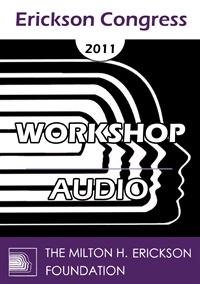
- Average Rating:
- Not yet rated
- Topic Areas:
- Hypnosis | Workshops | Self-Hypnosis | Phobia | Panic
- Categories:
- Erickson Congress | Erickson Congress 2011
- Faculty:
- Bernhard Trenkle, Dipl. Psych
- Duration:
- 59 Minutes
- Format:
- Audio Only
- Original Program Date:
- Dec 07, 2011
- Short Description:
- This workshop describes the use of hypnosis and self-hypnosis for treating phobias and panic disorders. The patient is learning a technique via which he can treat the problem him/herself. Building hope and diminishing helplessness is essential for a successful therapy and the workshop will address different possibilities to achieve this. The workshop is explaining the self-treatment technique via case examples. Homework assignments, pattern disruption, systemic considerations and stabilizing the treatment results are further topics.
- Price:
- $20.00 - Base Price
Tags: Hypnosis Panic Self-Hypnosis Phobias
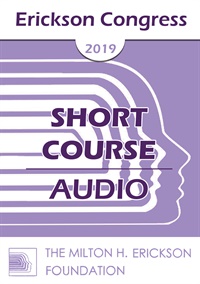
- Average Rating:
- Not yet rated
- Topic Areas:
- Short Courses | Hypnotherapy | Phobia | Hypnosis
- Categories:
- Erickson Congress | Erickson Congress 2019
- Faculty:
- Carlos Ramos, PhD
- Duration:
- 1 Hour 2 Minutes
- Format:
- Audio Only
- Original Program Date:
- Dec 12, 2019
- Short Description:
- The author of this research and presentation will explore how Douglas Flemons, the developer of relational hypnosis, facilitated an enduring non-volitional shift with a client, “Grace,” who desired to have a baby but could not see or talk about blood, needles, or medical procedures without fainting. Using context-enriched conversation analysis (CECA), the author will describe how he embraced his understanding of Ericksonian and Neo-Ericksonian hypnosis methods as a guide to examine multiple sources of data, which included selected audio-recorded excerpts from Douglas and Grace’s hypnotherapeutic sessions; Grace’s descriptions of change in her email correspondence with Douglas; and Douglas’s case notes.
- Price:
- $15.00 - Base Price
Tags: Hypnosis Hypnotherapy Phobias
- Average Rating:
- Not yet rated
- Topic Areas:
- Clinical Demonstrations | Phobia | Panic
- Categories:
- Erickson Congress | Erickson Congress 1994
- Faculty:
- Sidney Rosen, MD
- Course Levels:
- Master Degree or Higher in Health-Related Field
- Duration:
- 59:13
- Format:
- Audio and Video
- Original Program Date:
- Dec 11, 1994
- Short Description:
- IC94 Clinical Demonstration 18 - "PANIC CHAIR" TREATMENT FOR PHOBIAS - Sidney Rosen, M.D.
- Price:
-
Sale is $29.00
price reduced from Base Price - $59.00
- Average Rating:
- Not yet rated
- Topic Areas:
- Ericksonian Hypnosis and Therapy Techniques | Phobia | Milton Erickson | Hypnosis | Hypnotherapy | Strategic Therapy
- Categories:
- Erickson Streaming Video Collection | Erickson Materials | Milton H. Erickson Collections
- Faculty:
- Jeffrey Zeig, PhD | Milton H. Erickson, MD
- Course Levels:
- Master Degree or Higher in Health-Related Field
- Duration:
- 1 Hour 12 Minutes
- Format:
- Audio and Video
- Original Program Date:
- Aug 13, 2020
- Short Description:
- This video contains the best illustration of how Milton Erickson's handles cases presented to him. Using both hypnotherapy and strategic directives, Erickson works with a woman who has a phobia of a flying in a plane. This significant case exemplifies the fundamental principles and practices of an Ericksonian approach. These can be applied to other presenting problems and used by clinicians who subscribe to other treatment methodologies for a particular problem.
- Price:
- $49.95 - Base Price
Please wait ...


